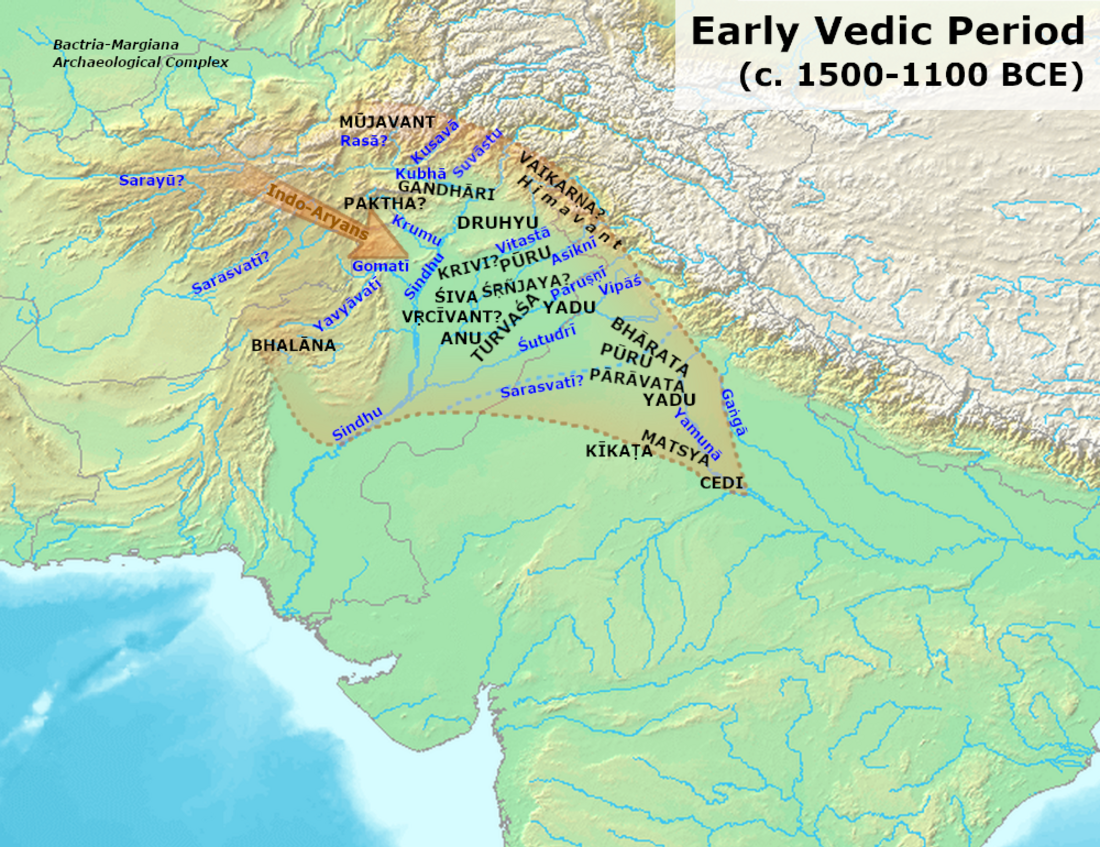Vedic period
ancient South Asian historical period From Wikipedia, the free encyclopedia
Remove ads
The Vedic period or Vedic civilization (c. 1500 – c. 600 BC) is a period in the history of South Asia between the end of the Indus Valley Civilization, and about c. 1200 BC. It gets its name from the Vedas, which are religious texts. They contain some details of life during this period. They are the main sources for understanding this period.[1]


The Vedas were composed and orally transmitted by speakers of an Old Indo-Aryan language. They had migrated into the northwestern regions of the Indian subcontinent early in this period. The associated Vedic culture was tribal and pastoral until c. 1200 or 1100 BC, and centered in the Punjab region.
The society then spread eastward to the Ganges Plain, becoming more agricultural and settled. The Vedic period saw the emergence of social classes, and developed into kingdoms known as the Janapada.[2][3] Archaeological cultures show phases of Vedic culture such as the Ochre Coloured Pottery culture, the Gandhara Grave culture, the Black and red ware culture and the Painted Grey Ware culture.[4]
Remove ads
References
Wikiwand - on
Seamless Wikipedia browsing. On steroids.
Remove ads
